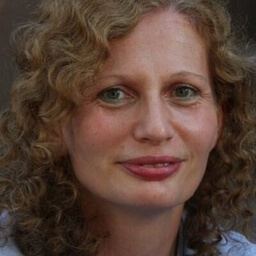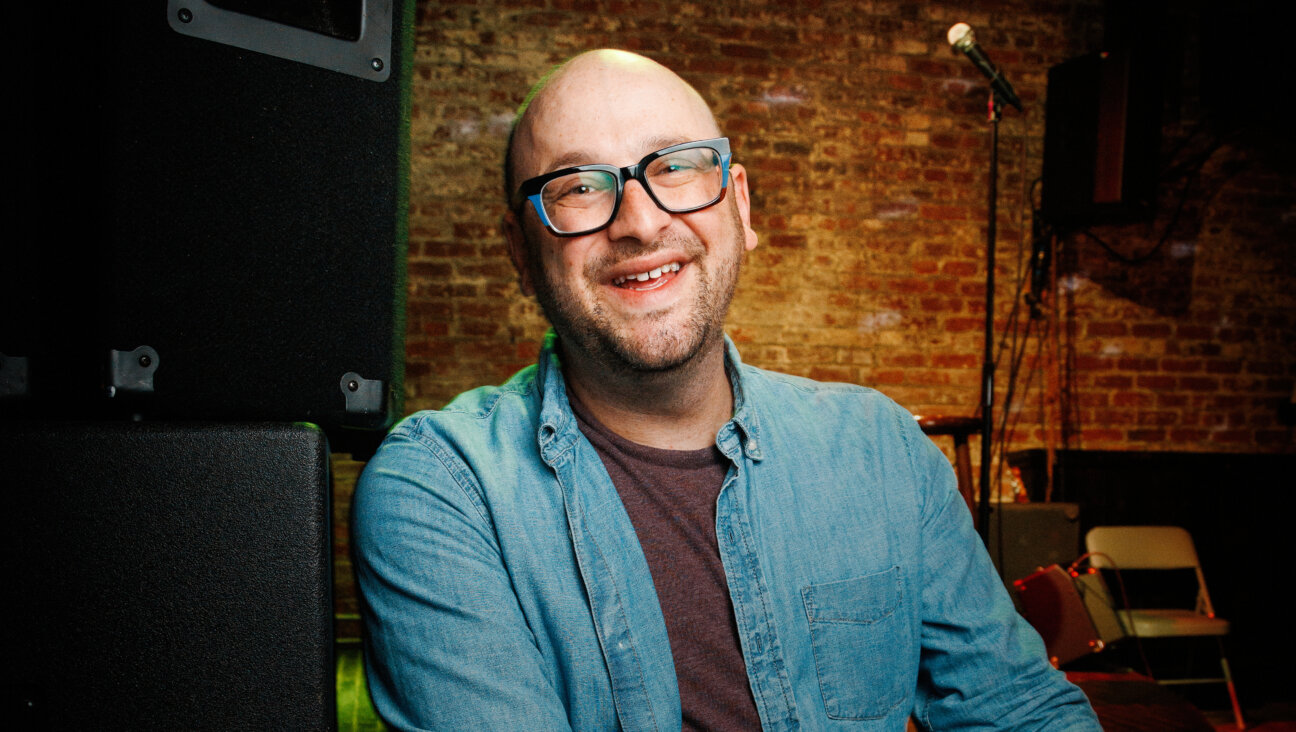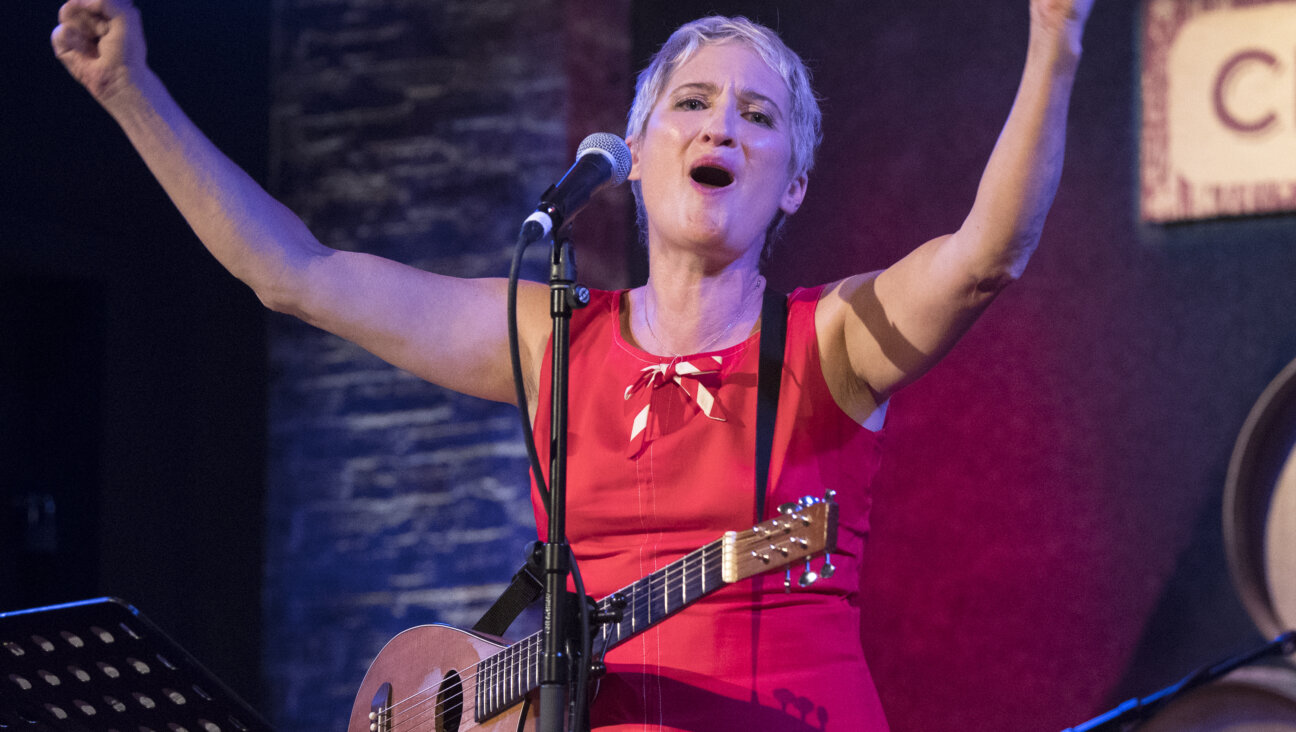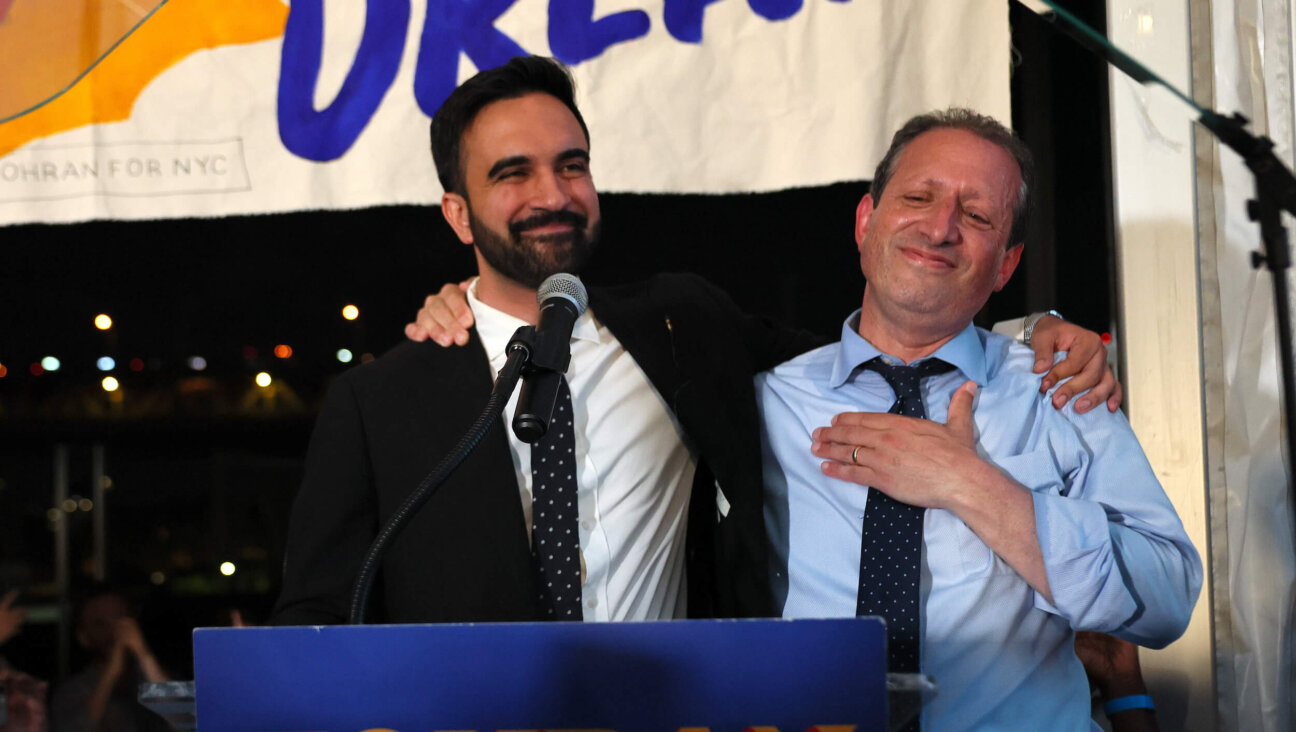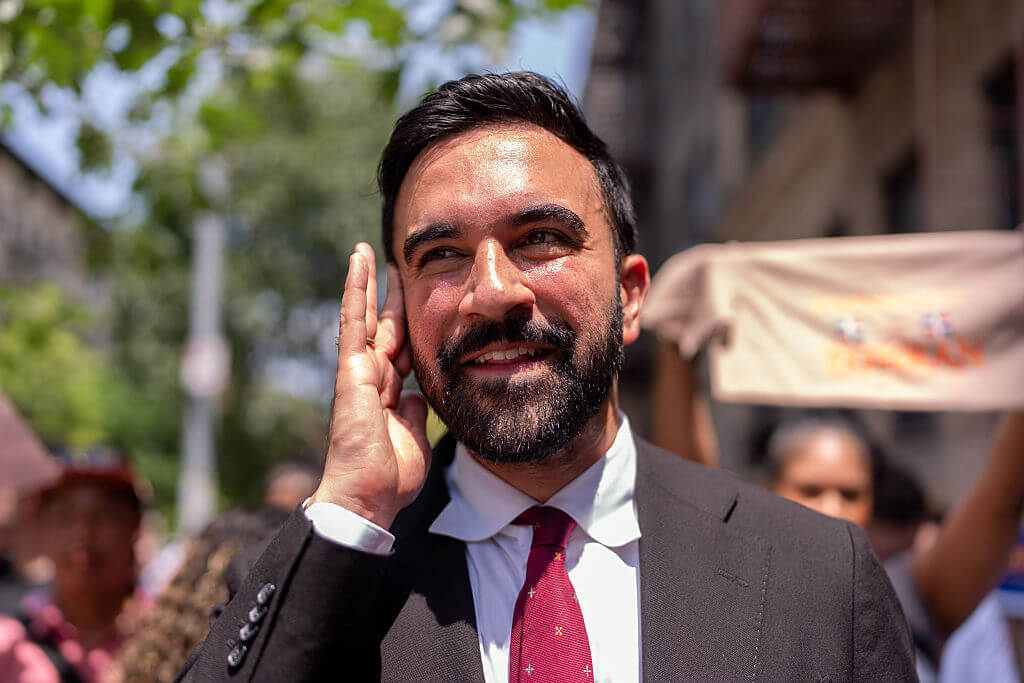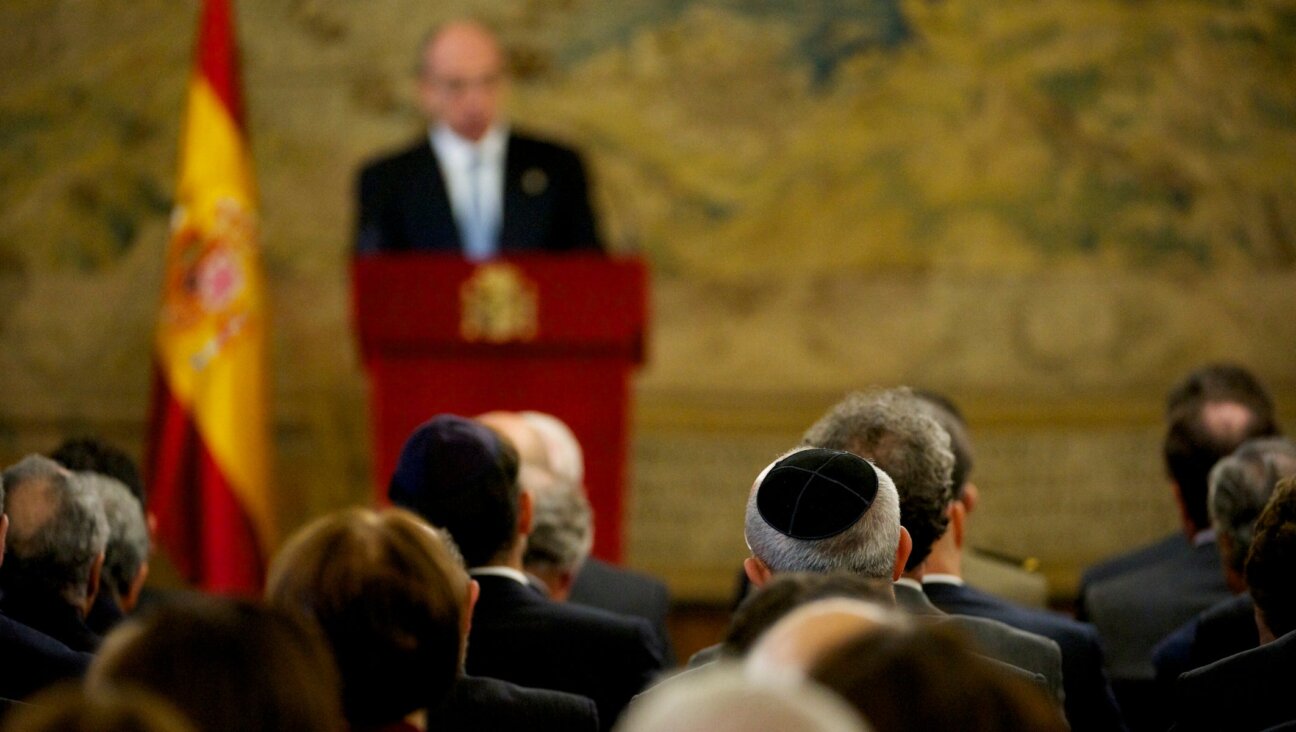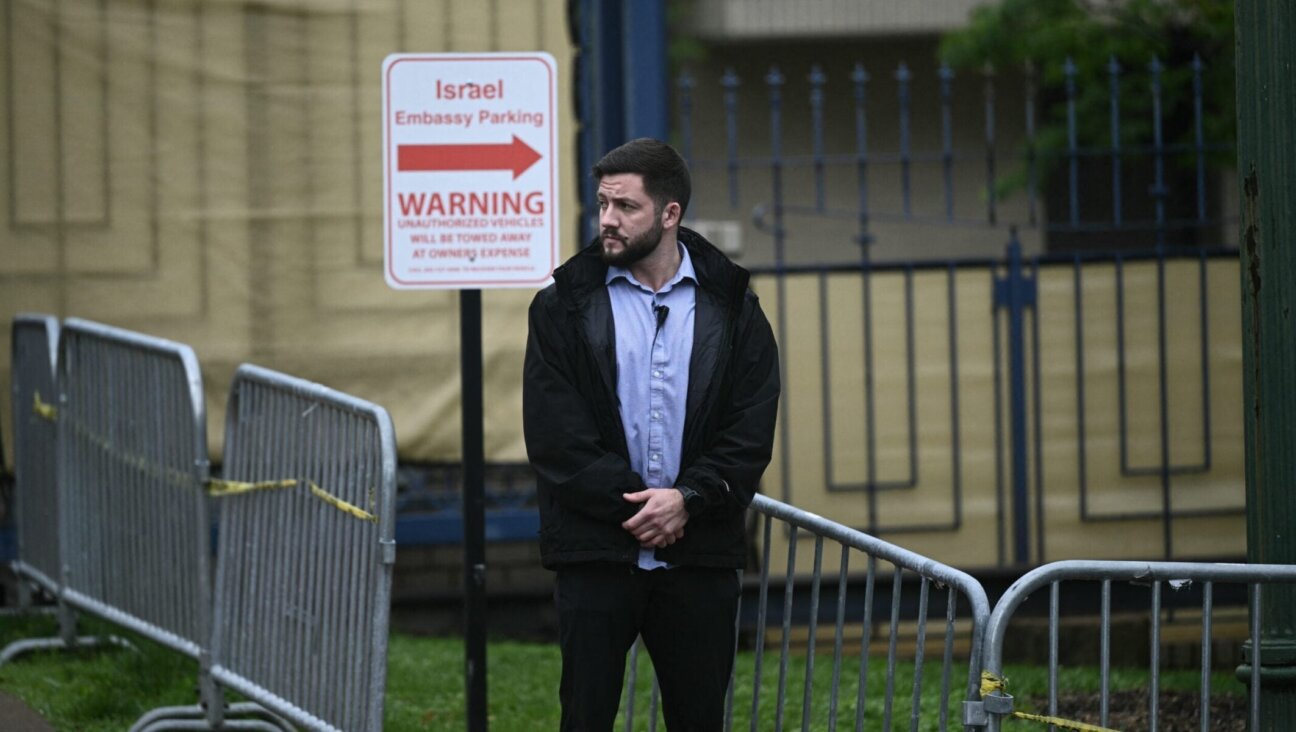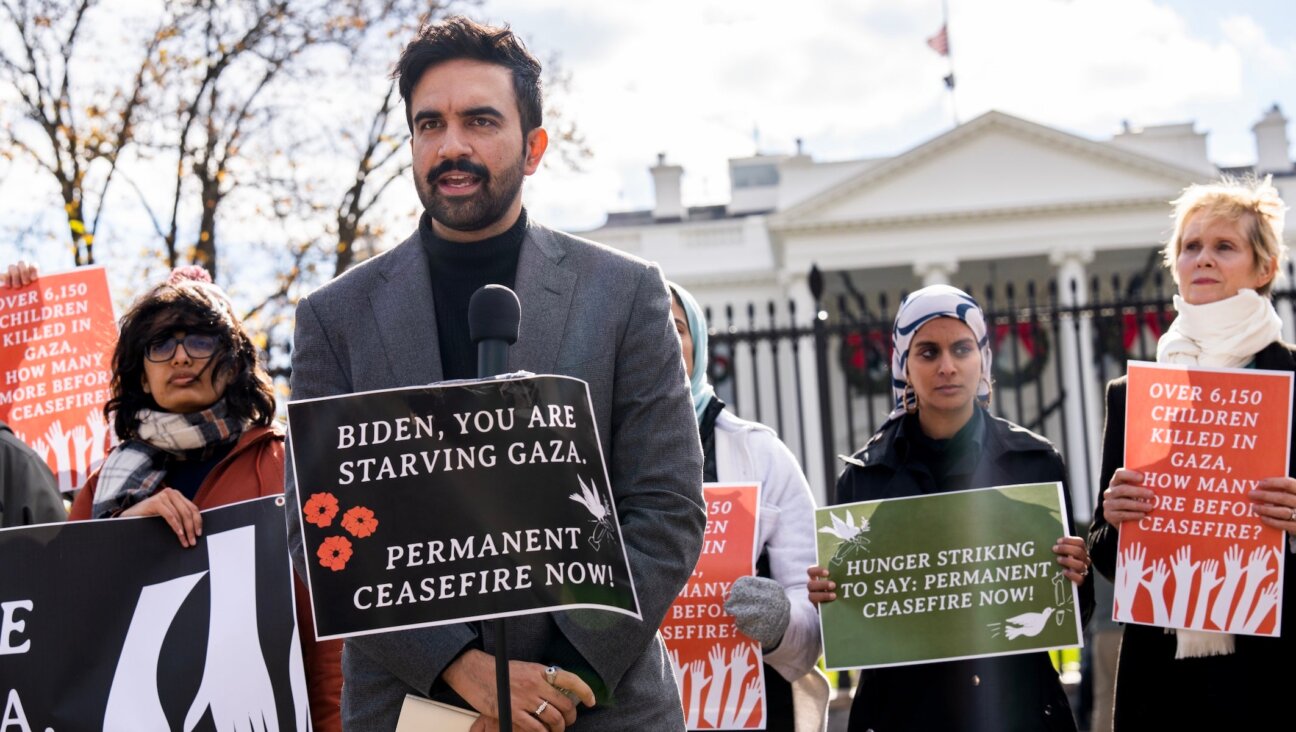5 Jewish things about the Mets — and why Jewish fans adore them
The connection to the Brooklyn Dodgers, loving the underdog and bein’ amazin’

Jewish center fielder Harrison Bader of the New York Mets catches a fly ball during Game 3 of the division series at Citi Field. Photo by Luke Hales/Getty Images
To understand why Jews love the Mets requires a Talmudic understanding of New York City history, sports history and Jewish psychology.
It’s about the DNA of baseball and Brooklyn in the 1950s; being called “amazin’” when you’re actually the worst team around, and disappointing fans so often that reveling in your losses become a badge of honor. Of course, those same fans experience unparalleled joy when there is a big win — as there was Wednesday, when the Mets clinched the National League Division Series.
Here are five Jewish things to know about the New York Mets.
1. The Brooklyn Dodgers connection
In the 1950s, one out of every three Brooklyn residents was Jewish, and the legendary Dodgers were their team. Brooklyn-born Sandy Koufax, one of the greatest Jewish athletes of all time, joined the Dodgers in 1955; his future Hall of Famer teammates included Roy Campanella, Gil Hodges, Tommy Lasorda, Pee Wee Reese, Jackie Robinson and Duke Snider.
But in 1958, owner Walter O’Malley moved the team to Los Angeles, and as a Brooklynite myself, I can tell you for a fact that we’re still mad about it, and we raise our children to hold that grudge as well. The Dodgers’ move to LA left New York without a National League team, so when the Mets came along in 1962, all those Dodgers fans switched their allegiance to the new National League team playing at Shea Stadium in Queens — and to hell with the Yankees.
Not for nothing, in the era of white flight, plenty of Jews fled Brooklyn, too — many of them resettling in Eastern Queens and Long Island, which made it easy to get to Shea.
2. Rooting for the underdog
The Mets’ 1962 inaugural season was the fifth-worst in the history of Major League Baseball: 40 wins, 120 losses. Manager Casey Stengel nicknamed the team “Amazin’” not because they were so good, but because they were so bad. Their ability to fail so spectacularly, over and over — while occasionally pulling off a heartstopping win — makes them “the most metaphysically, spiritually Jewish team,” as Meredith Shiner put it in The Franchise, her podcast about Jews and sports.
There’s even an internet meme, LOLMets, that Shiner says represents a very Jewish kind of “inherited dread, a belief that the worst will always happen, because as a baseball fan, you and your forebears and your offspring have chosen the New York Mets. And this is your reward for that choice.”
In other words, what could be more Jewish than expecting your team to lose, but holding out hope that they might pull off a miracle — like Moses parting the Red Sea, Joshua bringing down the walls of Jericho, keeping a flame going for eight nights when you only had enough oil for one — or winning the World Series, as the Mets did in 1969, when nobody thought they had a chance. The Baltimore Orioles were favored to win that year, but the Mets clobbered them 4 games to 1 in a best-of-seven series, replacing the nickname Amazin’ Mets with the moniker Miracle Mets.
They won the World Series again in 1986, this time with a rockstar team that included Keith Hernandez, Gary Carter, Dwight Gooden and Darryl Strawberry. Their official theme song, “Let’s Go Mets Go!,” blared on the dance floor of every bar and bat mitzvah held that year.
3. The Mets in Jewish pop culture
Jerry Seinfeld is a Mets superfan and mentions the team in the pilot episode of Seinfeld, when he says: “If you know what happened in the Mets game, don’t say anything. I taped it.” Hernandez played himself in a two-part Seinfeld episode, and in another episode, Jerry agrees to get cable, illegally, in order to watch 75 Mets games.
In the TV show The Odd Couple, the character Oscar Madison occasionally wears a Mets cap; while his ethnicity is never explicitly mentioned, he was portrayed by Jewish actor Jack Klugman and the show was based on a play by Jewish writer Neil Simon. A film version of The Odd Couple included a scene in which the Mets pull off a fictional triple play.
A new book, The Old Jewish Men’s Guide to Eating, Sleeping, and Futzing Around, has numerous Mets references, including this gem: “100%: The amount of OJM who would run over their own mother to see the Mets finish the season with a better record than the Yankees.”
4. Jewish players, then and now — and a Hebrew tattoo
A month before the 1969 World Series, Jewish hitter Art Shamsky sat out a doubleheader against the Pittsburgh Pirates on Rosh Hashanah. A teammate taped a note to his locker, saying: “We won the doubleheader. Why don’t you take off the rest of the year?” But Shamsky went on to become one of the heroes of the Mets’ championship win that year and a favorite among Jewish fans. (Fans of Everybody Loves Raymond may recall that the main character’s brother Robert got a dog he called Shamsky Number 2, in honor of a dog he had as a child named for his favorite ball player.)
Today’s team includes Jewish center fielder Harrison Bader, who wears a Magen David on his belt and a hostage dog tag.
Another player, Mark Vientos, who plays third base, is not Jewish but has Hebrew letters tattooed on his chest — הפלפמ or ha’pelpem — above the numbers 4:6, suggesting a chapter and verse of the Bible. The tattoo seems to refer to the New Testament book Philippians, according to my colleague Louis Keene, but the Hebrew is a little off and there is no book in the Hebrew Bible with that title.
5. A Jewish owner
The Mets are one of seven MLB teams owned by Jews. Hedge fund manager Steve Cohen became a minority owner of the team in 2012 and bought a controlling interest in 2020 for $2.4 billion, a record sum for a baseball team; with a net worth in the range of $15-20 billion, Cohen is believed to be the wealthiest of all MLB owners.
He is also a graduate of Great Neck North High School, Class of 1974, and hosted his 50th high school reunion in Citi Field’s Delta SKY360 Club on Sept. 28. For their $150 ticket to the event, his classmates got drinks, food, complimentary parking, a Mets cap and a look at Cohen’s private suite. Great Neck had — and still has — a large Jewish population, and many members of Cohen’s class are Jewish.
The Mets were out of town that night, playing the Brewers in Milwaukee, so Cohen’s classmates could not root for the team in person. Just as well: They lost 6-0.
CORRECTION: Corrects Jewish population of Brooklyn in the 1950s to one out of every three.



